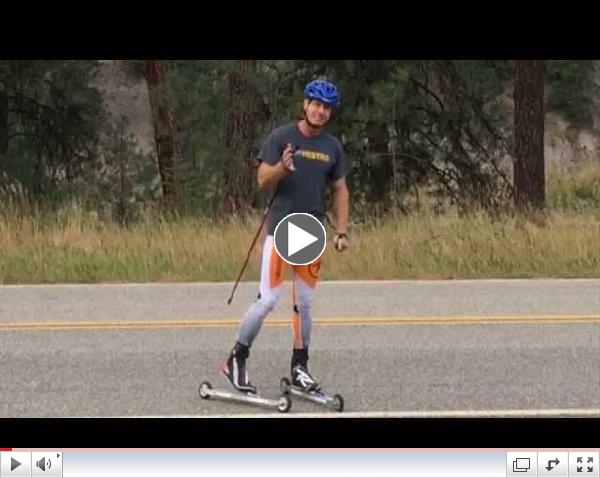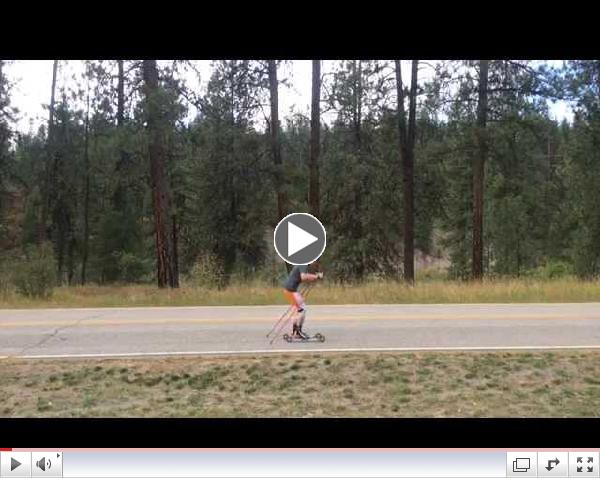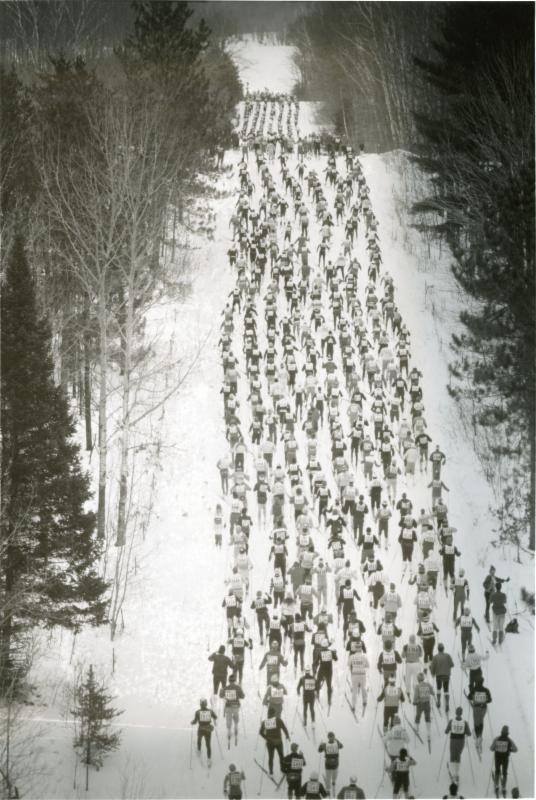|
|
SkiPost
|
Volume 17 Issue 28: Nov 12, 2015
|
|
|
|
Ask us, We Answer
Do you have a Nordic training, technique, equipment, travel, or event question? Just email us at weanswer@skipost.com |
|
60+ Threshold
As a 60+ yo skier, trail runner, and cyclist, I'm interested in more information regarding benefits/costs of threshold training (L3; 85-90% max HR) and your comments about it having "less than optimal benefits" and "high cost". I've always read that threshold training was the "best" training for endurance athletes, especially as we age. L4 (90-95% max HR) was usually recommended for the 3-4 weeks before competition season, specifically due to it's high cost to the CV and also immune systems. Other times it was explained as "older" skiers focused on marathons anyway (not always true), and most would rather avoid L4 training (also not true). Can you recommend any specific literature for us to investigate or personal coaching experiences that have led you to question those older beliefs? Does it have to do with the time required to do the longer L3 workouts, the recovery time needed, or the overall stress required to truly make a significant change in the system?
Thank you for your time.
DS.
Answer by Jim Galanes
Thank you for your question. This really gets to the "heart" of the matter.
First a brief preface. It is not clear to me how people are defining "threshold" or Level 3 training. The research I have read suggests this point typically occurs somewhere around 85%-88% of max heart rate. I suspect many athletes are classifying training as L3 or threshold at levels significantly lower than this. I am answering your question assuming that threshold refers to training at this higher level as I am very confident there is very little benefit and significant downside to training at levels around 80% of max heart rate.
We look at this threshold training question from a cost / benefit analysis. Here's what we have learned using Firstbeat. The workload of any giving training session is a function of time and intensity. Threshold training tends to be of longer duration at a relatively high intensity level. As a result, it will produce an EPOC training load of somewhere around 200. Maximal training will likely produce a very similar workload because it is typically done for a shorter length of time. So we are starting from the premise the cost of these two types of training are approximately the same.
What do we learn from exercise science? I believe the science has verified the benefit of VO2 Max training (training above 90% of max heart rate). It results in a positive shift in lactate threshold; an increase in mitochondrial and capillary density in the working muscles, and, most importantly, it improves performance. Some may argue that there are only marginal gains for an already fit individual in aerobic capacity. This may be the case but I believe the positive effects on other aerobic markers such as the ability of the muscles to produce higher levels of power and improved training and competitive performance are significant. With my athletes I consistently see significant improvements in speed and power at threshold and I attribute that to maximal training.
What does science tell us about "threshold" training? I have not found much research that documents significant positive effects. This is not to say that there are not benefits, but only that I believe the positive effects are not consistent or clear. I do believe it can improve economy, efficiency and fatigue resistance all of which become important in longer race efforts. Also, I can see some value in threshold training early in the year as part of the base building phase to prepare for harder intervals.
It is our fundamental belief that the best effects from training come from reducing errors of implementation and doing those things in training that we know work and have the desired effect. Given its inconsistent and unclear benefits, I do not believe threshold training should serve as a staple intensity training for skiers. It costs too much for inconsistent and unclear benefits.
One final note, it is important to carefully monitor the dose of maximal training and ensure effective and adequate recovery. For most masters age athletes, in a period when we focus on Aerobic Capacity training, we might recommend a small dose, 5-6 minutes one time per week and slowly increasing the load over weeks or even a couple of months. For most, the recommendation would be on one session per week or perhaps two every ten days to ensure proper recovery.
|
|
Fall Intervals?
Throughout the summer I've focused on Lactate Threshold interval training. What is the best way to continue the interval training as we transition into the fall/winter season? Should the focus go towards VO2 Max intervals? Should the overall "on" time decrease or maintain steady?
G
Answer by Jim Galanes
G,
This is a very complex question to answer due to the confusion around the definition of lactate threshold, its purported benefits and costs of this method of training when contrasted to the potential benefits of other forms of training. In my opinion many of the often stated benefits of this type of training are not amply proven in science.
In my experience and in the majority of current research what we once thought of as the benefits of this type of training are in question. I believe there is some value in this sort of training in early periods of the training year, and for long distance races where the primary benefit of this type of training is on efficiency or economy. While there is no doubt that virtually all training can have some positive effects for endurance sports we should consider a cost benefit analysis. In other words minimizing the cost and maximizing the benefits. In the case of threshold training due to the required duration of training and with less than optimal benefits the cost is quite high.
So the time to start with VO2Max Intervals is now. I recommend that you start conservatively, one session per week to ten days depending on fitness level and not more than 5-10 minutes of hard work time. Then over time you can first increase the volume of intervals in each session, followed by increasing the number of sessions. We have also found that for those not used to doing these type of intervals it can be a bit easier to learn how to do them effectively by starting short, 30 seconds on/30 seconds off and gradually building the duration over several weeks. It is important that for these intervals to be optimally effective that they have to be done very hard, 90-95% of maximum heart rate. You heart rate will not get to that level as it takes the heart rate and oxygen deliver systems some time to ramp up to meet the energy demands. A good pacing strategy for these it is think of doing these at a pace you could sustain for 4-6 minutes and after a couple of minutes of intervals you will be right in the desired range.
|
|
Double Poling by
David Lawrence
Video 1 = double pole overview explained using the new PSIA skills model (push-off, glide, weight transfer).
 | | Double Pole Technique Overview, Cross Country Nordic Skiing |
Video 2 = quick double pole drill built in an easy to follow progression.  | | Double Pole Drill Progression Nordic Skiing |
Check them out here: double poling videos. Plus - The Biggest PSIA Nordic Event of the Year... Be sure to sign-up for the first ever PSIA Nordic Ski Academy. You can read all about here. Ski Fast! David Lawrence PSIA Nordic Team XCSkiAcademy.com Follow XCSkiAcademy.com for tips, videos and articles
|
|
Lighter Swing Poles = Faster Skiing
Why should skiers care about their ski pole selection?
Ski Poles are often the most overlook piece of a Nordic skier's equipment. But ski poles are the only piece of your ski equipment that you actually hold, swing and lift the entire way. Racers average between 30-45 pole plants per minute. Over the course of a marathon like the 52 km American Birkebeiner the winner may have lifted his poles more than 5,000 times. A skier completing the race in 3 hours could have poled 7,000 times and a 4 hour skier might have lifted her poles 10,000 times.
But how much difference can a few oz. make?
Extra weight is not fun! If you and a friend ski a 3-hour Birkie and the friend uses their new Start Race 1.0 and you use your old CT4's, you are lifting an additional 3 oz. per stroke. If each stroke moves your pole 5 feet. This equates to lifting an additional 6,500 ft lbs during the race! Like curling 1 gallon of milk in each hand 375 times. Will you still beat your friend?
The most important shaft properties are overall weight, swing weight, stiffness, and strength.
Swing weight refers to the pendulum motion of a pole plant and that more weight near the pole tip requires more energy from the skier. The stiffer the pole the more of your energy goes into forward movement and the less into bending the pole. Strength refers to the durability of the pole.
What is the Recommended Pole Height?
Start recommends skier's body height in cm, less 20 cm for skate, and less 30 cm for classic as our Norm for most Recreational Racers. In most cases, this will, for adults, result in classic poles that reach the center of the shoulder bone. For skate the pole will reach around your mouth. This is measured with normal shoes on.
Do advanced skiers use taller poles than beginners?
For shorter races such as sprint; definitely yes. World Cup skiers can use 5-7.5 cm longer poles than recommended above. We have also seen a trend that World Cup skiers in general have increased their pole lengths the last decade. The reason is most likely the much stronger upper bodies for professional skiers these days, and shorter (sprint) tracks with fewer long sustained climbs. There are of course individual differences, but in general World Cup skiers use 2.5 cm longer poles than determined by the Norm above. But if you are a weekend warrior classical skiing long sustained climbs like at the Birkie be careful about chasing what World Cup skiers use in length. The norm is good.
Does technical ability change this?
Not really, but skiing with longer poles than recommended requires good technique.
Why do classical skiers use shorter poles than skaters?
In skating, bigger movements, greater speed, and always using two poles simultaneously allows you to use longer poles.
How is a ski pole length measured?
For most pole brands the length is measured from the tip (spike) of the pole to the top of the grip (not including any building height of the locking cap/wedge).
What makes Start poles special?
Start's pole deliver minimum swing weight and maximum durability at every price point. With 8mm at the basket Start delivers the lowest swing weight plus thicker sidewalls for best durability.

|
|
CXC Super Fit Program
Start is the low swing weight and high durability pole choice of
CXC
Bike Doc and Joe's
Dusty Olson
Start Chief Wax, Pole Genius
at
Visit with Dusty
Dusty Olson, Start Wax/Pole Genius, will be on-site next weekend CXC BikeDoc
SuperFit. Dusty will make sure you select the perfect pole at the perfect height. CXC chooses Start poles for their best-in-market swing weight + durability. What does Dusty think about being named Midwest Start Wax Genius? Dusty claimed"I've been called worse." More Bike Doc CXC Superfit info here http://www.bikedr.com/
Start Wax, Pole Genius at Start Wax-Pole local Genius's, Paul C. Schoening and Mark Thone, will be on-site next weekend Joes CXC SuperFit. CXC chooses Start poles for their best-in-market swing weight + durability. More on Joes CXC Superfit info here http://www.joessportinggoods.com/
|
|
This Bliz
Bliz for winter are now in stores.
Check out the This Bliz video from Bliz World Cup stars including Charlotte Kalla, Marcus Hellner, and Robin Bryntesson.
 | | This Bliz |
What did Caitlin wear?
What Bliz did Caitlin wear when she won Bronze at the World Championships?FM
Caitlin wore the Bliz Rush (aka no-flip). It is a new product for this winter (unless you raced at World Championships last year). It retails for just $79.95 and arrived in Bliz retailers this week.Andy at SkiPost/Bliz
|
Terva vs RF,
I started trying Start kick waxes last season, starting with the Oslo and RF waxes. (Start Wide Uni klister has been a long time favorite). Are their conditions where Start Tar would work better than the comparable RF grip wax? EH Medford, Oregon
Here is the simple Start Kicker rules
Tarva- Tar - New snow Synthetic- Dry snow RF- Wet snow Oslo - Icy snow
Andy at SkiPost/Start
|
NOQ
1-23-16

|
Saturday, February 6, 2016
|
West Yellowstone has perhaps best skiing in the world
right now.
A skiff of new overnight snow, 22 F. Trails groomed: Rendezvous, Dead Dog, Deja View, Biathlon Range and both Sprint Loops, Volunteer, Jerry's and the Doodle. Really nice early season skiing. Skate and classic 5.5 meters wide, skate lane is starting to stiffen, should be very nice skiing with the mild temperatures.

Yellowstone Ski Festival
With the 2015 Yellowstone Ski Festival in sight, the final details are wrapping up. It is not too late to register for a clinic. Consider a three or five day Nordic clinic to start the ski season off right. Or a one or two day to fit your holiday schedule. Take in an early season race. There are five different races at this year's ski festival. Online registration is available now. Sign up by Thursday, November 19 to avoid late fees.
Enjoy your First Tracks in West Yellowstone. Whether First Tracks truly means the corduroy and you, or it is the first time on skis this season, or the first time on skis period; you are invited to take them at the Yellowstone Ski Festival. Think Snow and make plans now to attend the 2015 Yellowstone Ski Festival.
For more information on the Yellowstone Ski Festival, please visit www.SkiRunBikeMT.com
|

Don't Miss Out on the
Greatest Show on Snow!

Birkie.com
|
|
Copper Country Ski Tigers Head Coach Devo Program
Snow Mountain Ranch/YMCA of the Rockies, Granby Nordic Groomer info here
Mt. Bachelor Sports Education Foundation Assistant Nordic Coach dan@MBSEF.org
Agamenticus Ski Club Assistant HS Coach & Assistant MS Coach
Clarkson University Asst. Nordic and XC coach
|
About SkiPost
Cross-Country skiing's community lodge. Where knowledge and stories are shared. The goal of SkiPost is to make the sport of Cross-Country skiing easier and more enjoyable for all who choose to participate. If you have questions on Cross-Country Skiing email us weanswer@SkiPost.com and visit SkiPost.com
Enjoy Winter,
Andrew Gerlach
Director/Editor- SkiPost
|
|
|
|
|
|
|